Surviving Killer Bees (Africanized Honey Bees)

Imagine getting swarmed, chased and attacked by thousands of stinging killer bees. Potentially you could go into anaphylactic shock. That could easily kill you (as it does to many people every year). I’ll outline here how to stay safe around killer bees and what to do if you’re attacked by a swarm of killer bees.

Swarms of ‘killer’ bees have been causing very real problems since they escaped from a “science experiment gone wrong” about a half century ago (more on that later). They will chase and sting you to death if you get too close to their hive. Amazingly, this isn’t science fiction. It really does happen on occasion. And if you’re unlucky enough to accidentally run into a hive, there’s not much more to do other than run as fast as you can in the opposite direction. But if you know a bit about their fascinating biology, you can avoid a potentially life-threatening situation.
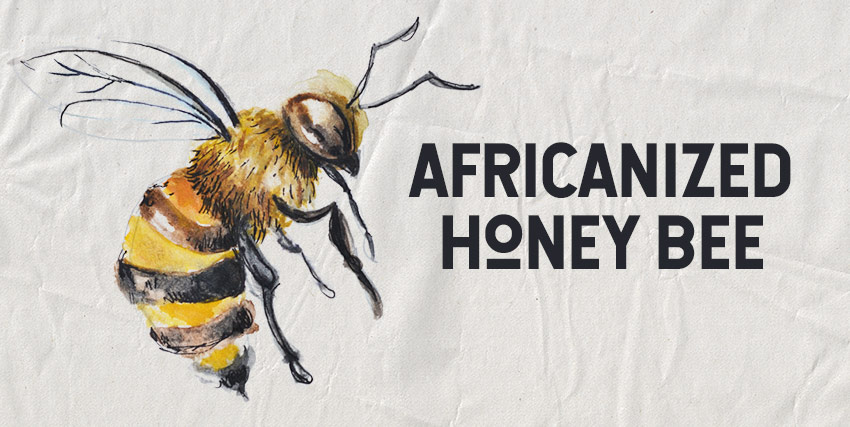
Killer Bee Basics
These bees should never have existed. It all began with the European honey bee – the bee most associated with honey and beekeepers. If you can believe it, honey bees are actually a domesticated animal. These little buzzing insects have been selectively bred over the ages to be fairly docile honey producers and more importantly – crop pollinators. Honey bees are responsible for pollinating 30% of crops in the US, producing our bounty of fruits and vegetables – the importance of bees to our survival cannot be overstated. In addition, they constitute a 4.5 billion dollar industry in the US alone. But the European honey bee is not used to pollinate crops everywhere in the world. It doesn’t fare well in tropical climates – like Brazil.

In need of a better bee to pollinate crops in warmer climates, a scientist in Brazil crossbred European honey bees with the hardier, yet more aggressive, African bees. The hope was that they’d be more adaptable to the heat and humidity. It worked. Then it all went wrong in 1957 when 26 swarms escaped quarantine. By 1980 they had covered the South American continent and were spreading north rapidly. By 1990 they had reached the US, and they’re still spreading. Here is their predicted final northern range, but there is a possibility this estimate is conservative.
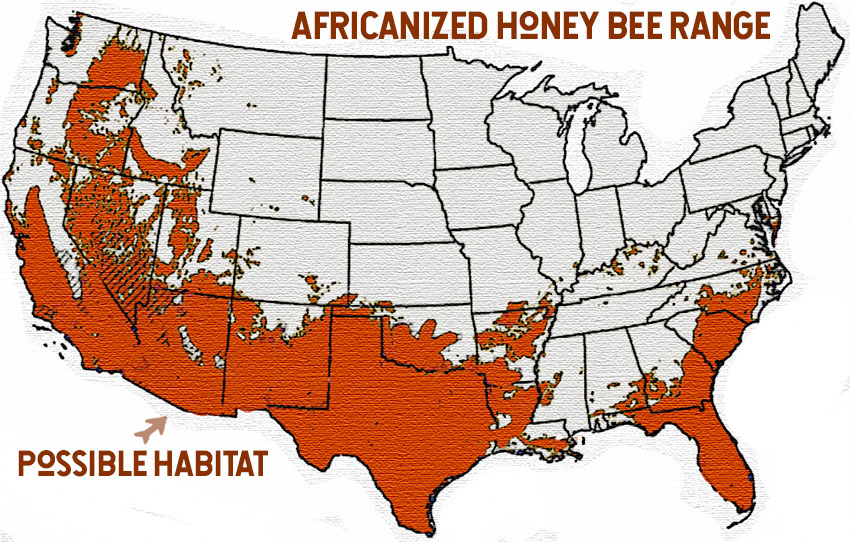
Africanized Honey Bee Quick facts
Killer bees (or Africanized honey bees) don’t produce quite as much honey, but they are well adapted to heat. They are also very good at defending their hives – an aggressive trait we can probably attribute to the African bees.
European honey bees might attack a hive intruder with 10 percent of the colony. Africanized honey bees will attack with nearly the entire hive – and do it in about 3 seconds of being disturbed. On top of that, they’ll keep chasing the intruder for upwards of half a mile from the hive!
Currently the death toll from Africanized honey bees is around 1000 people – roughly 16 a year. Fortunately, as years go by, this number seems to be dropping a bit. This ranks the killer bee higher than shark deaths per year, which is only about 4 a year. Thus, these bees are something to be taken seriously!
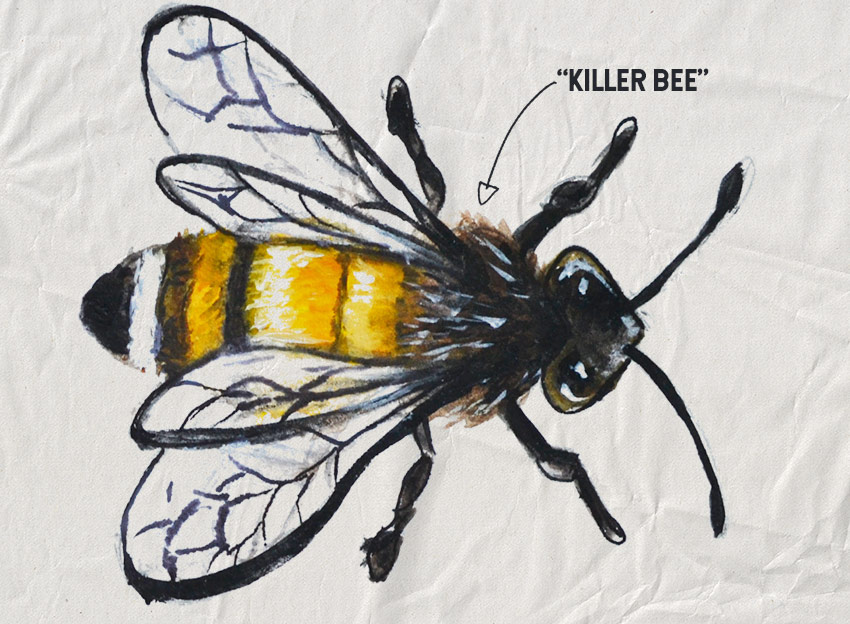
How Death Occurs from Killer Bees
Death can occur in two main ways – anaphylaxis and through an overload of venom.
First, I should note, a European honey bee and an Africanized honey bee have the same venom – your body will react the same way if stung by each. So if you are allergic to any bee, you’ll also be allergic to Africanized bees. A serious reaction often includes anaphylactic shock, trouble breathing, and respiratory distress.
The other way Africanized honey bees can kill is by the sheer volume of stings. It has been estimated that over 1000 stings are enough to cause the more serious side effects including dizziness, nausea, diarrhea, vomiting, increased heart rate, respiratory distress, renal failure and eventual death.
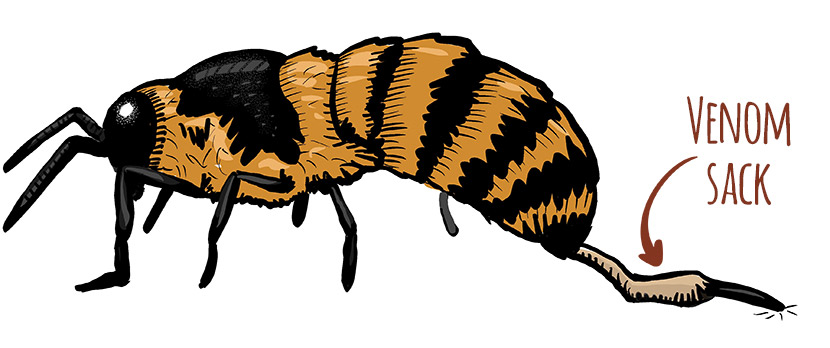
Stinging is a death sentence for the bee – they are essentially kamikaze defenders. When a bee stings, most of the time it flies away – leaving the stinger, venom sacks, and her insides attached to the victim. It can rarely pull the stinger out without fatal consequences.
Scenarios to Avoid with Killer Bees
This one is simple. Avoid disturbing a nest that you can’t run away from. For the most part, Africanized honey bees are found in the drier and hotter parts of the US, Central and South America. There is no sure way to avoid a nest as they’re often tucked away inside of a building, a cave opening, or some other crevice. But, if you hear the buzzing of a few bees, be alert. You could have just stumbled upon the hive!
The Most Dangerous Africanized Bee Situations
The most dangerous situation is unknowingly disturbing a hive with no way to escape and having no protective gear covering your body. An example might be climbing a cliff and you accidentally disturb a nest with no easy way to escape.
The danger is, however, decreasing over time in some places. We know this because of studies in Puerto Rico, where the bees finally invaded. Studies are showing them to be less aggressive there. While the first theory was that they’re interbreeding with less aggressive European honey bees on the island, no one really knows what’s happening. Studying the changes in those bees may be the key to dealing with these invasive bees who are here to stay.
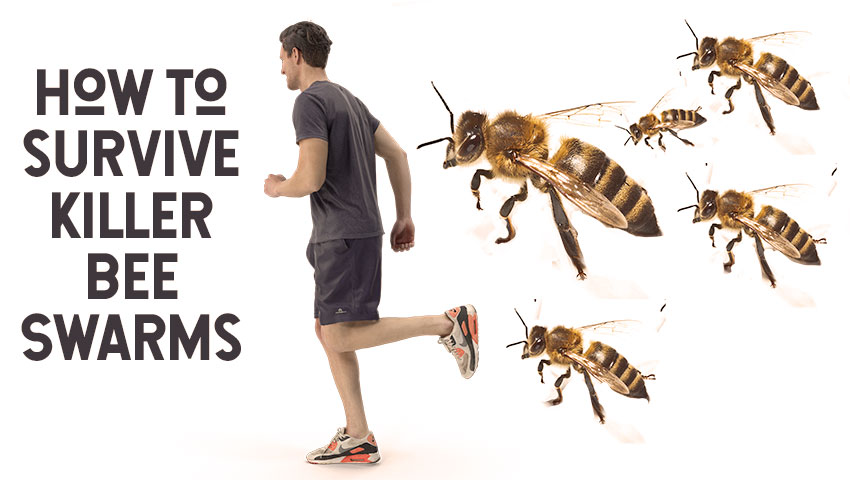
How to Survive a Killer Bee Swarm / Attack?
In general, don’t swat at stray bees. The best thing to do is to move away slowly and scan the area for signs of a hive. Swatting a bee close to the hive could trigger the release of the pheromones that signal to the rest of the colony that you’re an intruder.
If that happens and the entire hive begins to attack, cover your head and run for cover as fast as you can. Get into a vehicle, a building, a tent or even jump into a river!
Do not stop to try and swat or kill them – that will make things even worse.
If you have access to smoke, use it. When honey bees are alarmed they emit pheromones that the other bees smell and also get alarmed. However, smoke seems to interfere with the bees ability to smell these compounds and will quickly calm them down for about 10-20 minutes. But, if that’s not an option, your best bet is to get under cover or just keep running.
PREFER LISTENING?
If you’d rather listen to this article, I’ve recorded it here to make it as accessible as possible.
Suggested STING Video
You might like the video we did showing a Hornet Stinging in Slow motion. While it’s not a killer bee, it’s somewhat similar.

